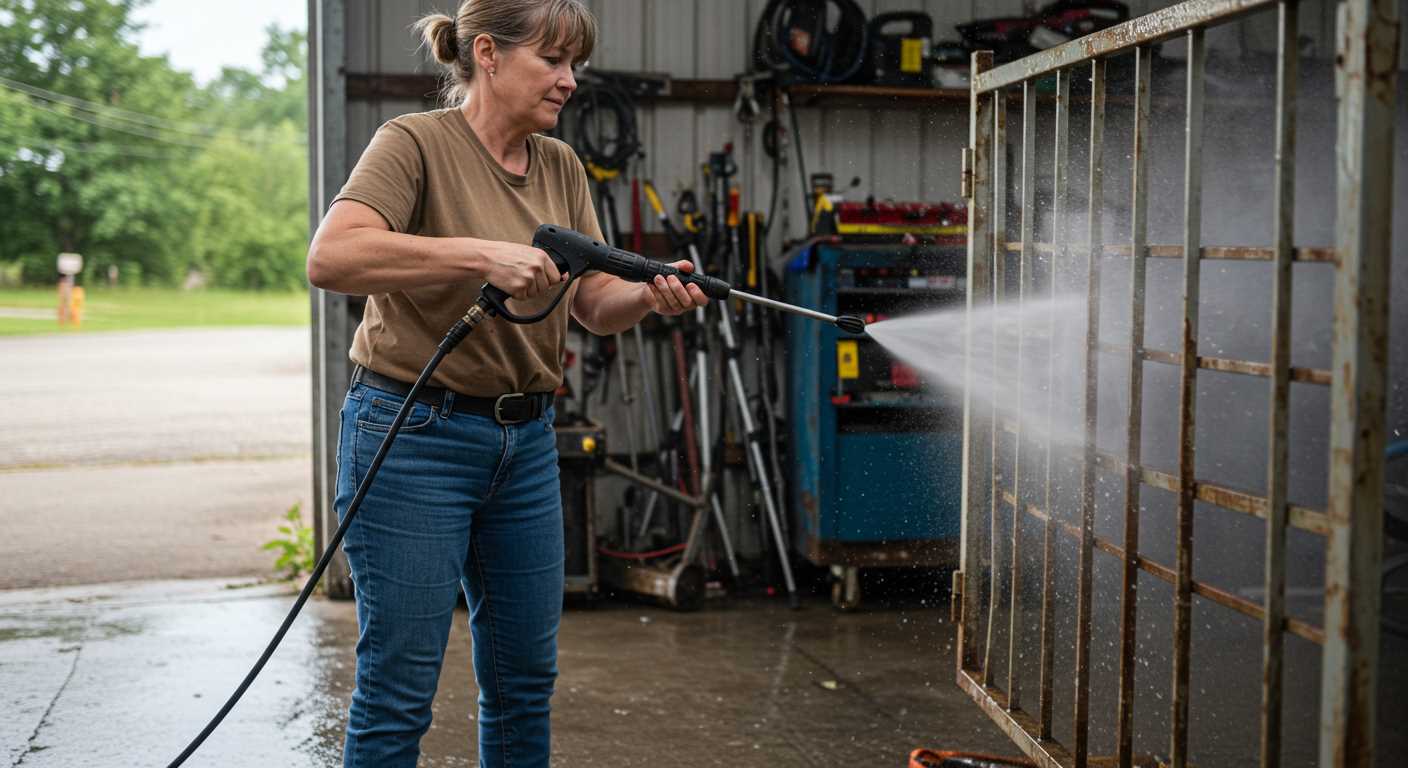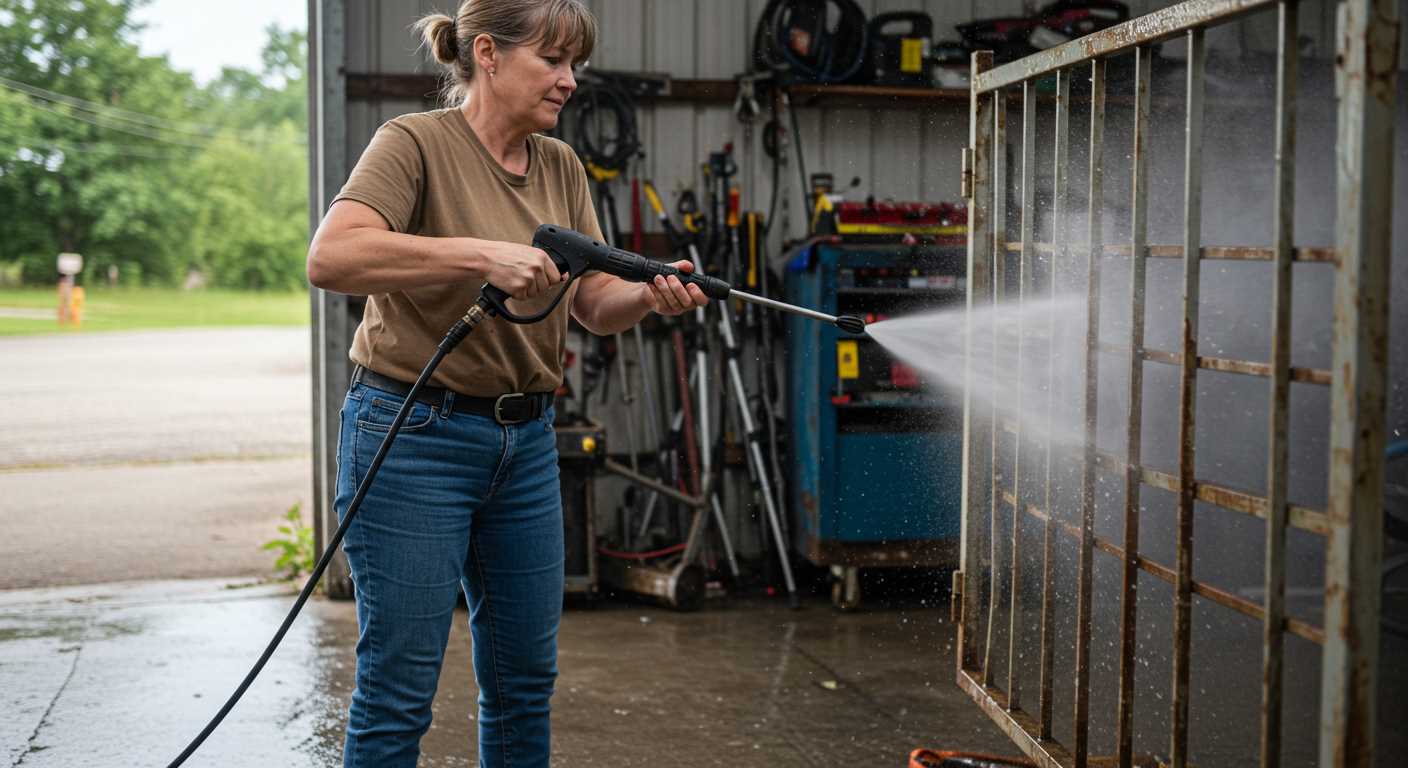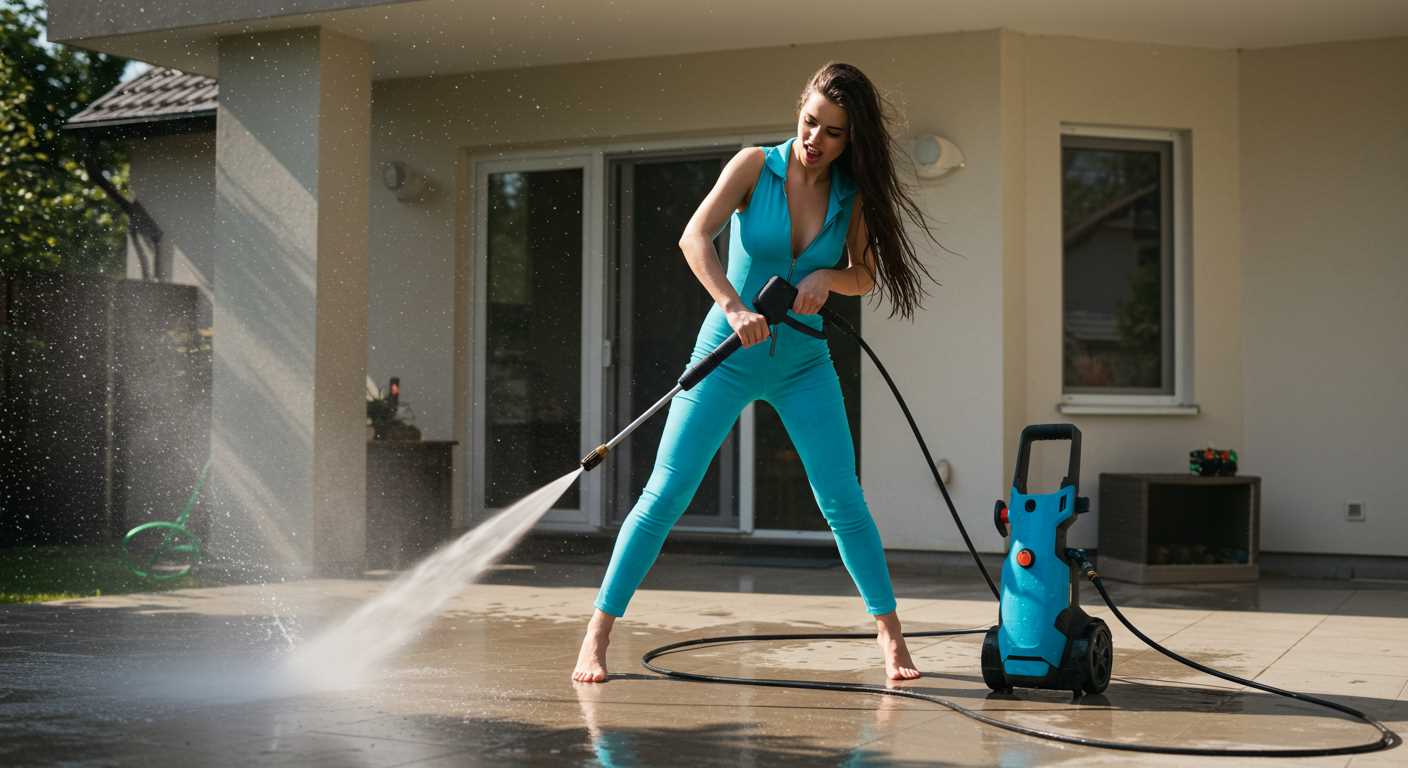




Using a high-pressure cleaning device on your vehicle requires caution. While these machines can effectively remove dirt and grime, improper usage may lead to unwanted consequences. I’ve witnessed examples where individuals have unintentionally inflicted harm on their vehicles, such as stripping paint or damaging delicate components.
When operating such equipment, it’s crucial to maintain a safe distance from the surface. A distance of at least 30 centimetres is advisable to prevent the intense force from causing scratches or other issues. In my experience, vehicles with delicate finishes, like those with clear coats or custom paint jobs, are particularly vulnerable. I once saw a friend’s newly painted motorcycle get marred due to a momentary lapse in judgement; he used too high a setting too close to the surface.
Another factor to consider is the nozzle type. A narrow jet can focus too much pressure in one spot, while a wider spray disperses the force. I recommend using a fan spray nozzle, which allows for a gentler cleaning approach. Always start with the lowest pressure setting and gradually increase it if needed. This simple adjustment can save you from costly repairs.
Lastly, avoid targeting sensitive areas, such as seals, electrical components, and undercarriages where debris can accumulate. I often advise using a soft brush attachment for those hard-to-reach spots instead of relying solely on the high-pressure method. A little extra care goes a long way in preserving the integrity of your vehicle.
Understanding Pressure Washer Specifications
Always check the specifications before using any cleaning equipment on a vehicle. Knowing the details can prevent unforeseen issues. For instance, look for the PSI (pounds per square inch) rating. A unit with a PSI between 1200 and 1900 is typically safe for automotive surfaces. Anything above 2000 PSI can start to strip paint or damage delicate parts.
Flow Rate
Next, consider the flow rate, measured in GPM (gallons per minute). A higher flow rate means more water output, which can help in rinsing off dirt and grime. However, a flow rate above 2.5 GPM is often excessive for vehicles and may lead to water pooling and potential damage to seals and gaskets.
Nozzle Selection
The type of nozzle you choose significantly affects the cleaning process. A 25-degree nozzle is ideal for most car exteriors, offering a balance between cleaning power and safety. Avoid using zero-degree nozzles, as they concentrate water in a tight stream, increasing the risk of harm to the surface.
Lastly, always maintain a safe distance from the surface. Keeping the nozzle at least two feet away helps prevent unnecessary wear and tear, ensuring that the vehicle remains in pristine condition. Understanding these specifications will help you protect your investment while achieving that spotless finish.
Identifying Vulnerable Car Components
Prioritise caution around specific parts of your vehicle that are susceptible to high-intensity cleaning. I’ve seen firsthand how certain areas can be compromised, leading to costly repairs.
Key Areas of Concern
| Component | Risk Factors | Recommendations |
|---|---|---|
| Paintwork | High pressure can strip wax and protective coatings, causing scratches. | Use a diluted solution and a wider nozzle. Maintain a safe distance. |
| Wheel Bearings | Forceful water can penetrate seals, leading to corrosion. | Avoid direct spraying. Clean wheels with a gentle brush instead. |
| Electrical Components | Water intrusion can cause short-circuits and electrical failures. | Shield electrical areas with plastic covers or avoid spraying directly. |
| Undercarriage | Excessive pressure can dislodge protective coatings, exposing metal. | Clean with low pressure and ensure thorough drying afterwards. |
| Grille and Vents | Water can force debris into sensitive areas, affecting performance. | Use a soft cloth or sponge to clean these areas manually. |
Conclusion
Being aware of these vulnerable components is essential for maintaining the integrity of your vehicle. I once witnessed a friend’s mishap with a high-pressure cleaner that led to significant issues with his electrical system. Take the time to inspect and clean thoughtfully.
For those curious about culinary timing, check out this article on how long to roast a chicken in pressure cooker.
Recommended Pressure Settings for Car Cleaning
For optimal results during automotive cleaning, using a setting between 1200 to 1900 PSI is advisable. This range effectively removes dirt and grime without risking harm to the vehicle’s surface. Adjusting the nozzle to a wider spray pattern can further reduce the intensity of the water stream, making it safer for delicate areas.
Specific Situations
When tackling tougher spots, such as bird droppings or tree sap, you might need to increase the pressure slightly, but always keep it below 2000 PSI. A direct spray should be avoided on sensitive components like mirrors, lights, and trim. Instead, approach these areas from a distance and with a broader spray angle to diffuse the pressure.
Use of Detergents
Incorporating a suitable cleaning solution can enhance the washing process. Selecting the right pressure washer detergent for house can aid in breaking down tough stains without the need for excessive pressure. Always rinse thoroughly after applying any detergent to prevent residue build-up.
Proper nozzle selection for car surfaces
Choosing the right nozzle is key to achieving a clean finish while avoiding harm to the paintwork. For automotive surfaces, I always recommend a fan nozzle with a wide spray pattern, typically 25 to 40 degrees. This disperses the water effectively, reducing the intensity of the stream on vulnerable areas.
Fan Nozzles
A 25-degree nozzle is versatile and works well for most situations, especially for rinsing off dirt and grime without being overly aggressive. However, for delicate surfaces like painted areas, I often opt for a 40-degree nozzle. This wider spray angle ensures that the water pressure is less concentrated, making it safer for finishes.
Specialty Nozzles
In some cases, a rotating or turbo nozzle can be useful for tackling stubborn stains, but caution is necessary. These nozzles can increase the risk of abrasiveness, so maintaining a safe distance of at least two feet from the surface is crucial. Always test on a small, inconspicuous area first to gauge the effect before proceeding to larger sections.
Techniques for Safe Washing
Begin with rinsing the vehicle using plain water to remove loose dirt and debris. This initial step prevents scratches during the main cleaning process. I often use a gentle stream to avoid any impact on delicate surfaces.
Maintain a Safe Distance
Keep the nozzle at least 2 feet away from the paintwork. I’ve found that this distance significantly reduces the risk of stripping away clear coat or damaging trim. Adjusting the angle of the spray also helps prevent direct hits on sensitive areas.
Utilise a Two-Bucket Method
While not strictly a washing technique, employing a two-bucket system alongside this method enhances results. One bucket should contain soapy water, while the other is for rinsing the sponge or cloth. This approach minimises the chance of transferring dirt back onto the surface, ensuring a thorough clean without causing harm.
After washing, always check for any stubborn spots or grime. I recommend using a soft brush or detailing cloth for these areas, as it helps maintain the integrity of the vehicle’s finish while ensuring a spotless appearance.
Avoiding Common Mistakes During Vehicle Cleaning
Always begin with a thorough rinse to remove loose dirt and debris. Skipping this step can lead to scratches when applying soap or using tools.
Using Incorrect Cleaning Products
Utilising household cleaners can harm the finish. Stick to products specifically designed for automotive use. Here’s a quick list of what to avoid:
- Bleach-based cleaners
- Dish soap
- General all-purpose cleaners
Neglecting to Protect Sensitive Areas
Avoid washing electronic components and sensitive areas like the engine bay or undercarriage without proper precautions. Cover electrical connections and sensitive sensors with plastic bags to prevent water intrusion.
Improper Drying Techniques
After washing, using a rough towel can create unsightly marks. Instead, opt for a soft microfiber cloth. Follow these steps:
- Gently blot the surface instead of dragging the cloth.
- Start from the top and work your way down to avoid water streaks.
- Always dry in sections to ensure thoroughness.
Ignoring the Weather
Washing during direct sunlight can cause soap to dry too quickly, leaving spots. Choose overcast days or early mornings for the best results.
Not Inspecting After Cleaning
Always conduct a post-clean inspection. Look for any missed spots or areas that require a second pass. This helps maintain the vehicle’s appearance and condition over time.
Alternative Cleaning Methods for Sensitive Areas
For delicate sections of a vehicle, opting for gentler cleaning techniques can yield excellent results without the risk of harm. Here are some effective methods to consider:
Microfiber Cloths and Soft Brushes
- Use a damp microfiber cloth for gentle wiping of sensitive surfaces such as paintwork and trim. This prevents scratches while effectively lifting dirt.
- Soft-bristled brushes are ideal for intricate areas like grilles and wheels. Choose brushes specifically designed for automotive use to avoid abrasiveness.
Foam Cannon with Low-Pressure Water
- Employ a foam cannon attached to a garden hose. This method applies a thick layer of foam, providing a lubricated surface for dirt removal.
- Set the water flow to low to ensure that the foam gently glides over the vehicle without excessive force.
Maintaining a safe distance while applying foam is crucial; this prevents any unnecessary impact on sensitive components. Avoid using harsh chemicals that could compromise finishes. Instead, opt for pH-balanced soaps designed for automotive care.
For the interiors, use a vacuum with soft attachments to prevent fabric damage. Spot-clean stains with a mild upholstery cleaner and a soft cloth, ensuring not to soak the material.
Regular maintenance of these areas will keep your vehicle looking pristine without resorting to high-impact cleaning methods.
FAQ:
Can using a pressure washer damage my car’s paint?
Yes, using a pressure washer can potentially damage your car’s paint if the pressure is too high or if the nozzle is too close to the surface. Most car paints are designed to withstand normal cleaning methods, but the force from a pressure washer can strip away the protective clear coat or even chip the paint if not used properly. It is advisable to use a lower pressure setting and maintain a safe distance from the car’s surface to avoid any damage.
What pressure setting is safe for washing my car?
A safe pressure setting for washing a car typically ranges from 1200 to 1900 PSI (pounds per square inch). This range is effective for removing dirt and grime without risking damage to the paintwork. It’s also important to use a wide-angle nozzle, as this will help to disperse the pressure over a larger area, reducing the risk of causing harm to the vehicle’s surface.
Are there specific areas of my car that I should avoid when using a pressure washer?
Yes, there are certain areas to be cautious with when using a pressure washer. It is advisable to avoid spraying directly at sensitive components such as the engine bay, electrical connections, and areas with seals, such as door and window trims. Additionally, be careful around delicate surfaces like side mirrors and plastic trims, as the high pressure could cause cracks or dislodgement.
Can I use a pressure washer on my car’s wheels and tyres?
Using a pressure washer on wheels and tyres can be effective for removing brake dust and road grime, but caution is required. It’s best to use a specific wheel cleaning attachment or a lower pressure setting to prevent damage to the wheels’ finish. Additionally, ensure that you do not spray the pressure washer directly into the brake components, as this could introduce water into areas where it could cause rust or corrosion.




.jpg)
.jpg)


